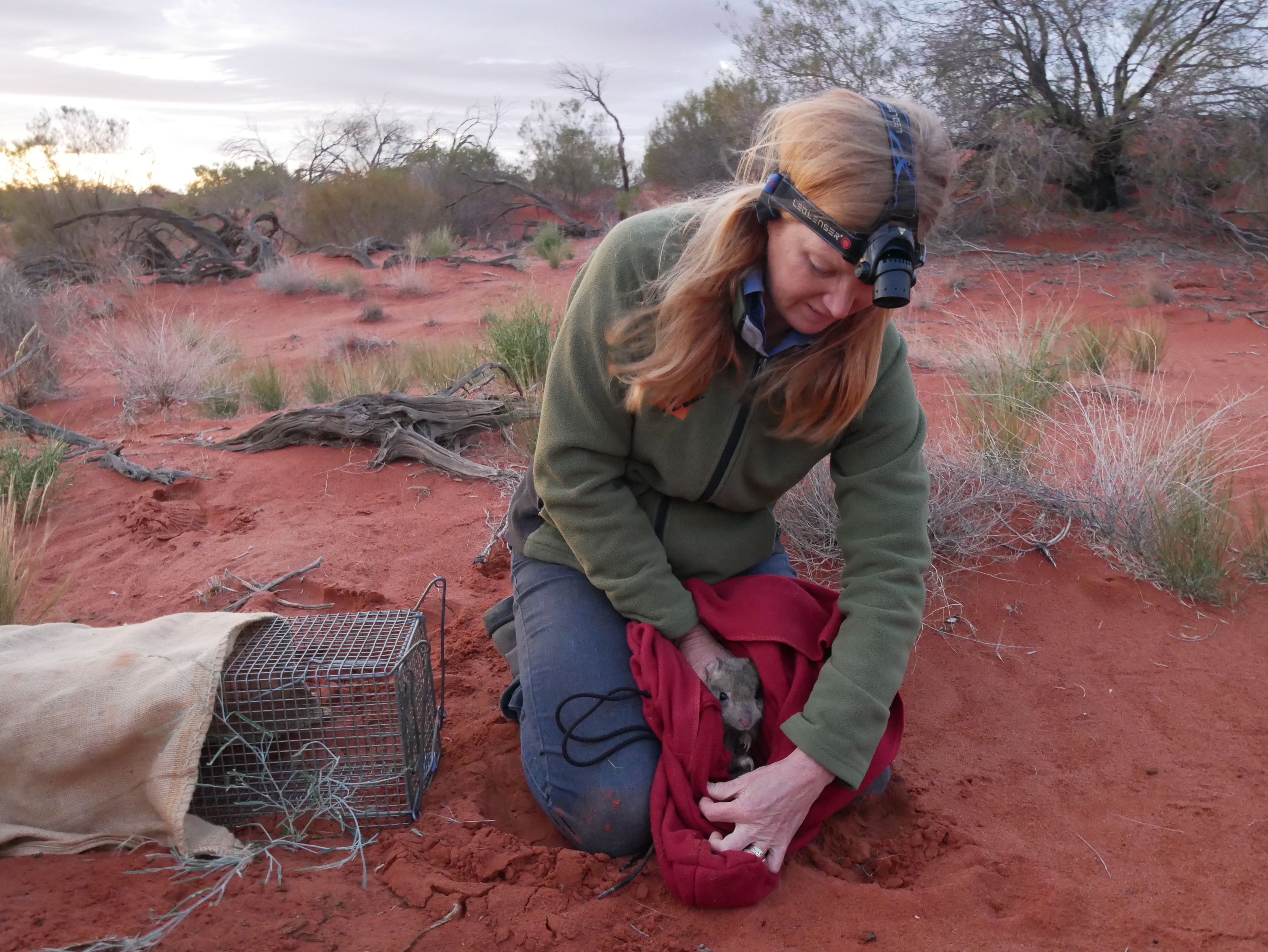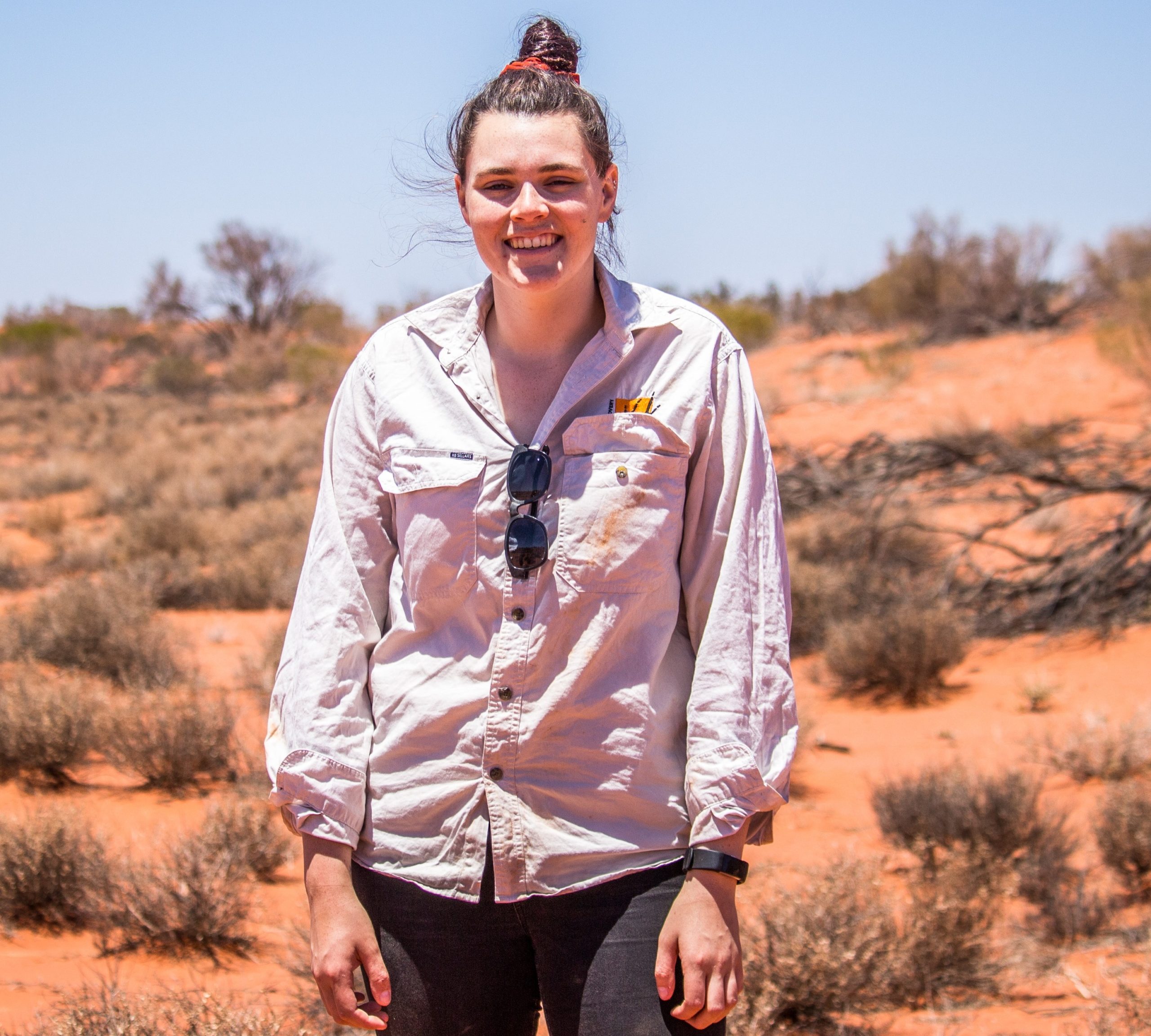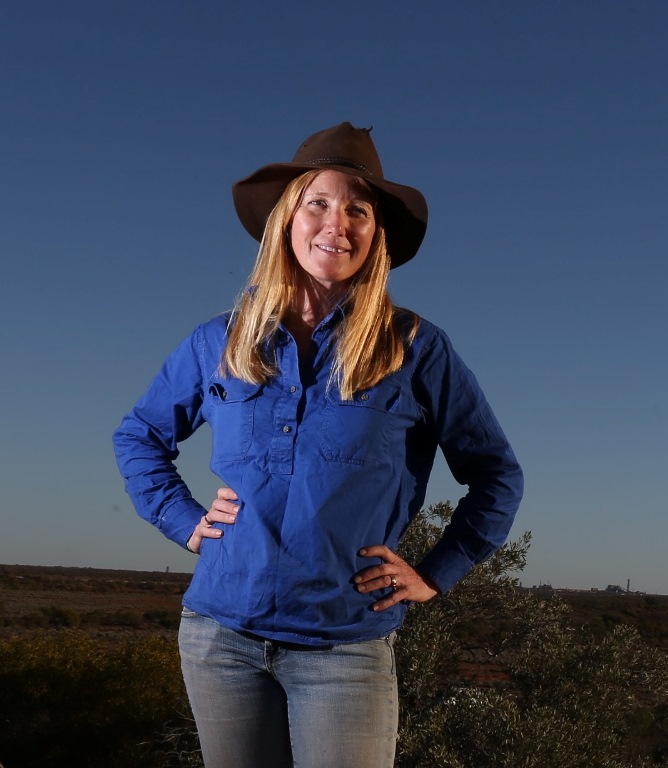Why would we build a cat-proof reserve with six paddocks but then put cats back into two of them?
A 6,300 ha section of the 12,300 ha Arid Recovery Reserve is designed as an experimental area, where we have both cats and endangered mammals. We recently used the setup to run a study with Ecological Horizons and the University of Tasmania in a trial of smart new feral cat control technology. Felixer grooming traps are devices that use lasers to detect feral cats as they walk past, and fire a poison gel onto the cat that then licks it off.
While Felixers had been extensively tested in labs and remote field sites, there needed to be a proper test of whether these could actually reduce feral cat numbers. Twenty Felixers were installed in a paddock containing feral cats, and unequivocally demonstrated a significant decrease in the cat population. There were also bettongs and bilbies in the paddock, and the Felixers did not fire on a single non-target animal. You can read the news story here or the full paper here.

This latest research on Felixers has shown that they are a serious tool for cat control. Now we know how effective they can be, there are many applications they can be used for. Felixers are an addition to the cat control toolkit unlike any other method. Solar powered and programmable, they can be used to protect colonies of threatened species in remote areas (e.g. around colonies of endangered Warru, black-footed rock-wallabies), to manage feral cats around hotspots like landfill sites, to control cats around fenced reserves or for eradication projects on islands. Felixers are already being deployed in bushfire affected areas on Kangaroo Island to protect vulnerable native animals exposed by the fires and are being used to protect the Night Parrot in Queensland.
Thanks to funding from Landcare, we’ve been able to purchase a Felixer for Arid Recovery and expect to start putting it to use later this year. We look forward to keeping you updated on how it goes.
Going back now to why we would build a cat-proof reserve and put cats back into part of it. There is certainly some trepidation in turning a paddock over to cats after the hard won efforts of fencing them out and eradicating them. Had we kept the areas cat-free we would have claimed the title as the largest feral-free area on mainland Australia! While not a tangible achievement, it would certainly have symbolic value.

We believe the trade-off of having a few paddocks with cats is well and truly worth it. They have enabled so much experimental science that could not be conducted anywhere else in Australia. On top of this Felixer trial, these paddocks have been critical in experimentally understanding prey switching in cats, how to train bilbies to survive cats and how bettongs can coexist with cats. They have enabled eight peer-reviewed papers to be accepted in international science journals in the last few years, with many more in the pipeline. Most importantly, the research from these paddocks can push conservation forward in new ways.
As organisations like Bush Heritage and the Australian Wildlife Conservancy do wonderful work protecting large pieces of land around the country, Arid Recovery can make its best contribution by using these unique experimental setups in pioneering new approaches, technologies and understandings that steadily improve conservation for everyone’s benefit.





















